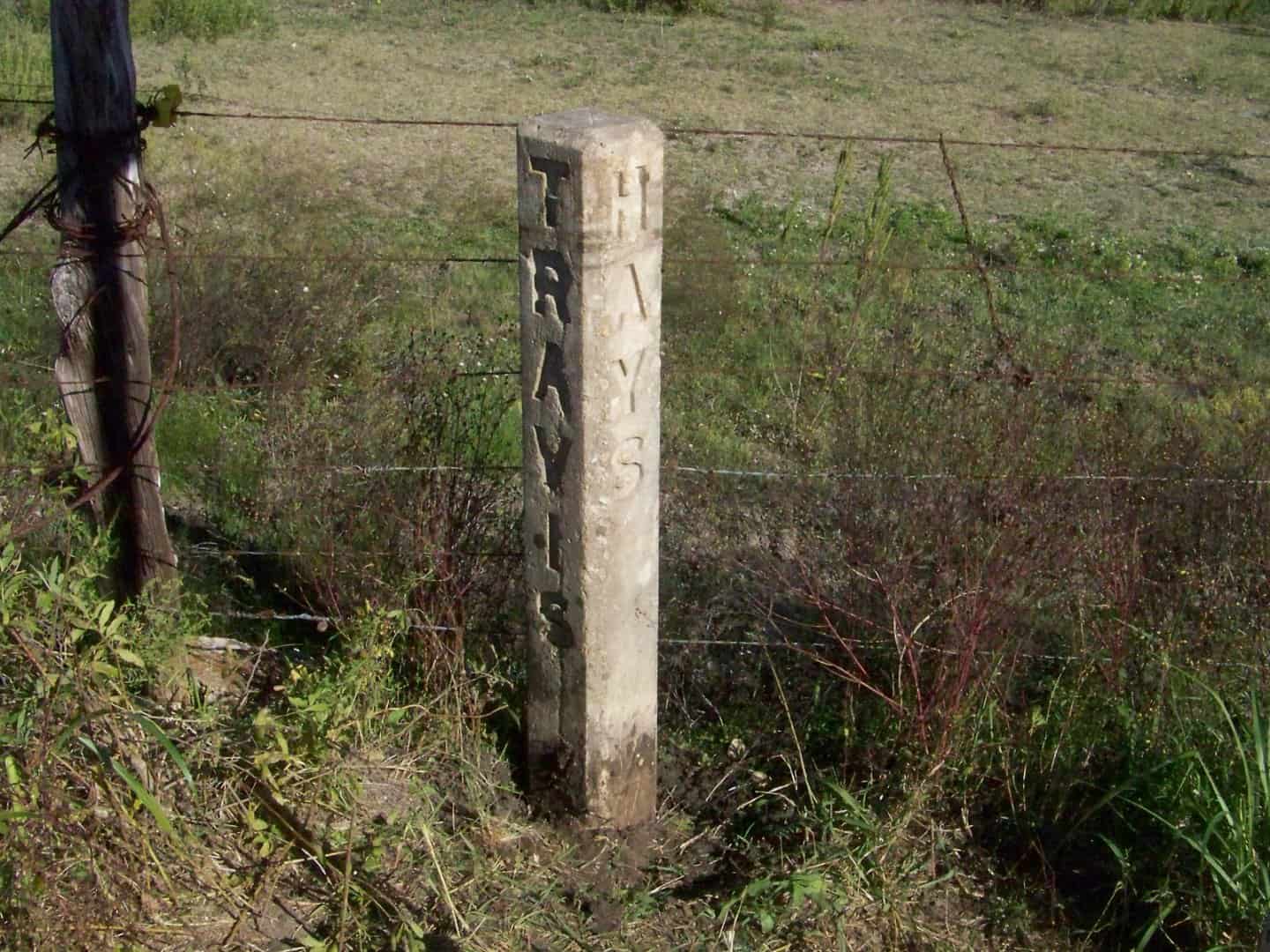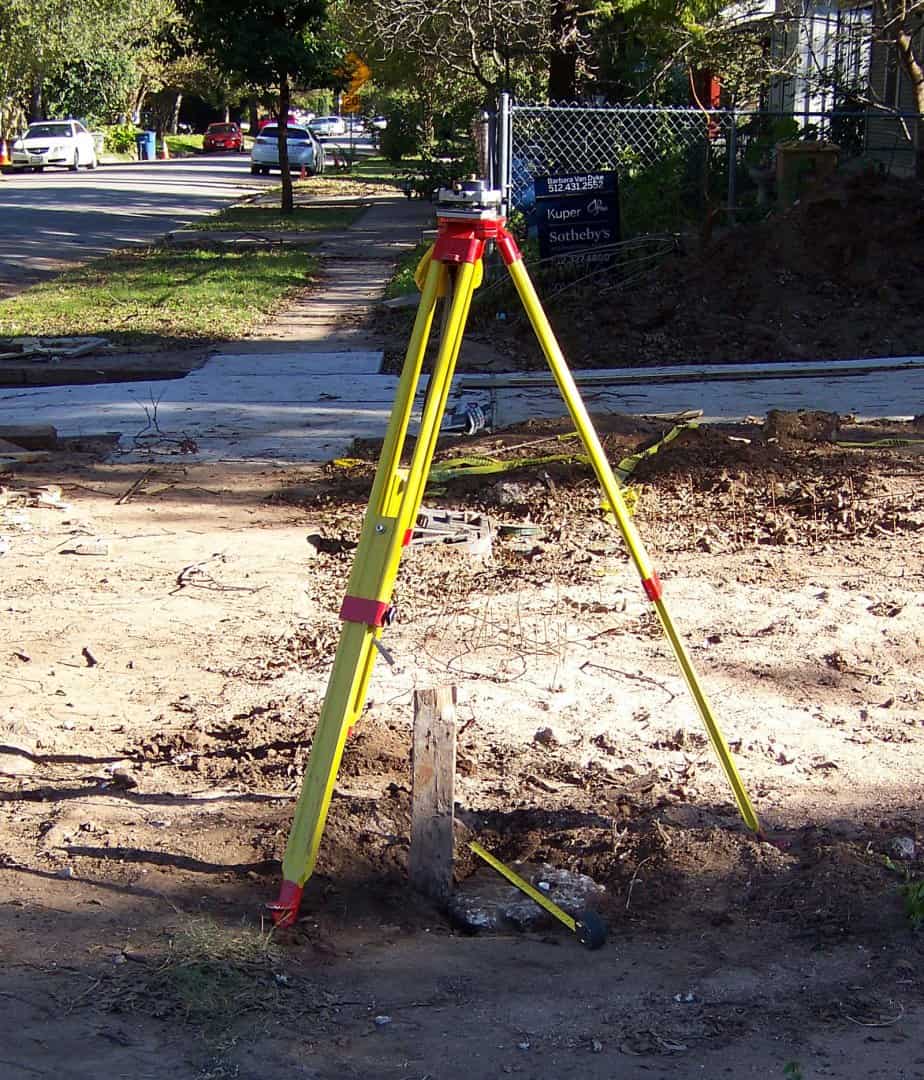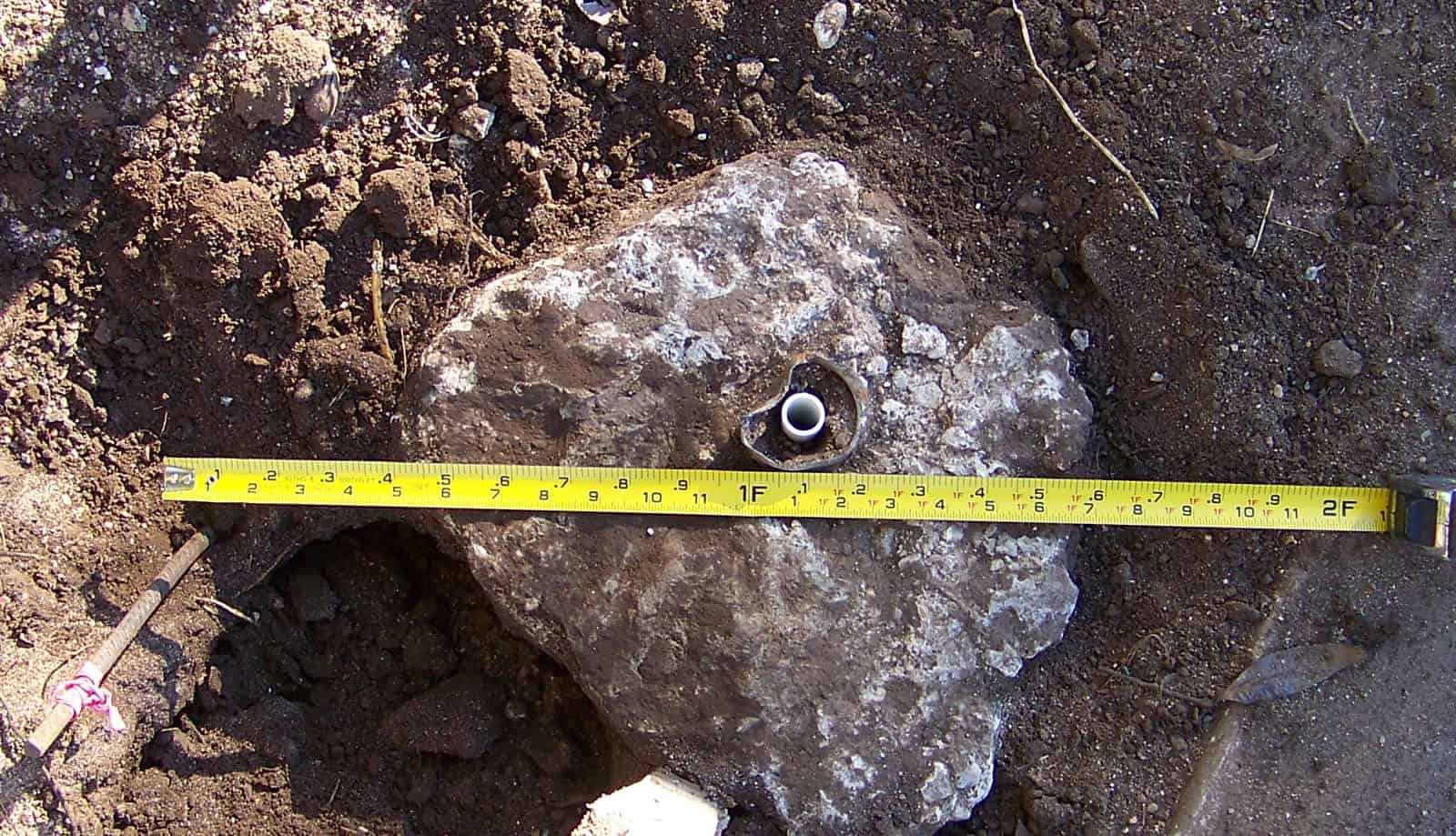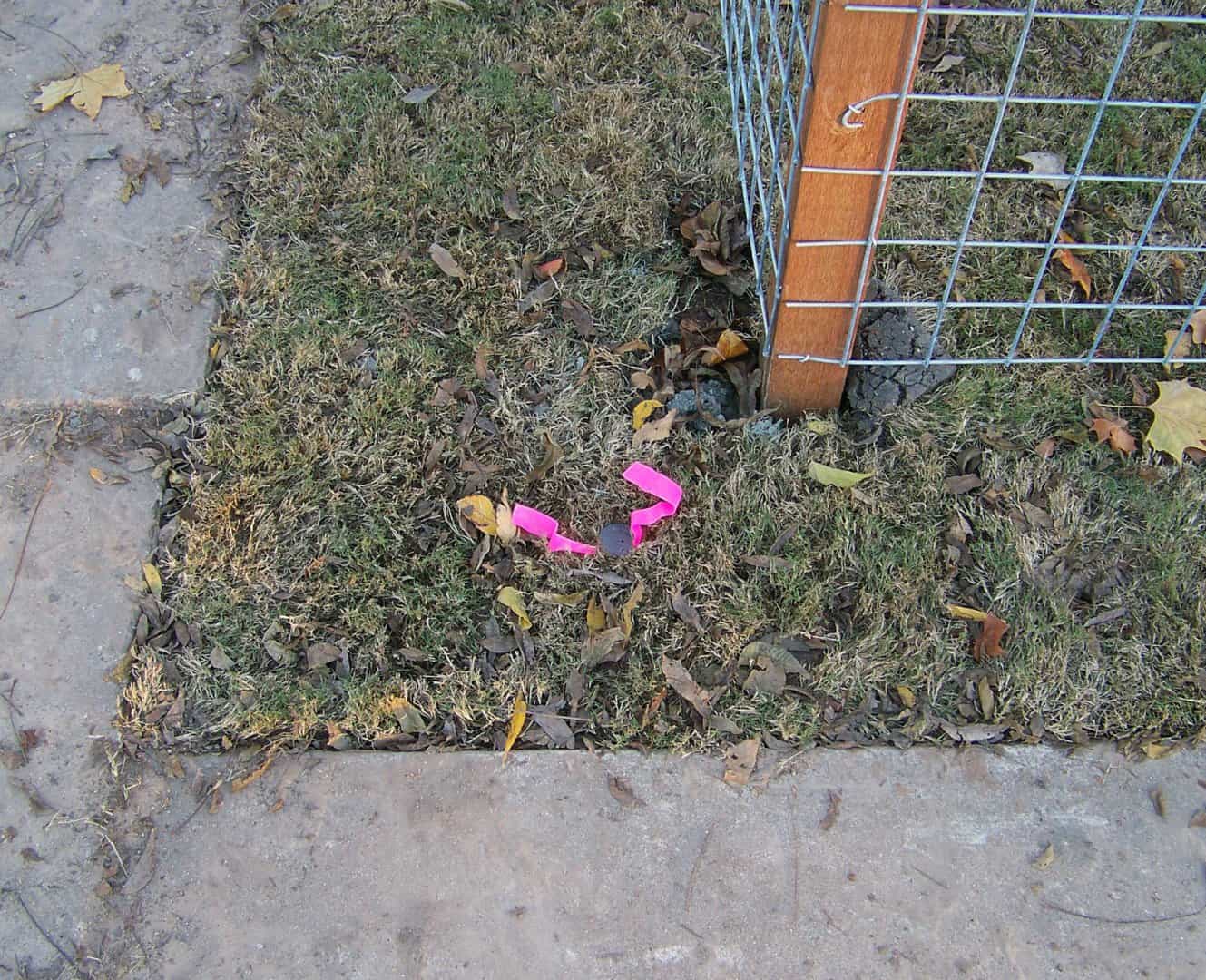James, speaking of Texas. My mom's from there.
You can tell a Texan when they are a good ways off.
But
When they get up close, you cannot tell them much!
🙂
Brian Allen, post: 364931, member: 1333 wrote: [sarcasm]Yepper, a 2 1/2" diam. galvanized steel fence post, probably 8 ft. long and set 2-3 ft. in the ground in concrete is definitely an inferior monument to a 2-bit (now $1) piece of rebar.[/sarcasm]
This is the winner of the thread.
The fence corner is being used to create an agreement. Evidently all the property owners want to use the fence, which most likely they have been recognizing as the line. There may not be an agreement if they have to decide which side of the post the proper survey monument is to be placed. I am in agreement that when possible we need to advise the owner to use the best monumentation. I was once instructed to use the center-line of a ditch for the division of an out lot at a regional mall. I was able to show that they would get better utilization putting a pipe in the ditch and having a straight sideline. In the final analysis, we work for the client and their preference trumps ours.
MightyMoe, post: 365072, member: 700 wrote: but wouldn't the point for the county division be the corner of the post closest to the camera, I don't think the center would work, then some of the lettering would be in the wrong county.
No, that is a post on the county line where it passes a road line. The post is oriented so that the diagonal is nominally on the line. The center of the top is the point. If you would have located the chamfer at the corner as marking the point, you've made my point that posts tend not to be really excellent markers.
lmbrls, post: 365084, member: 6823 wrote: The fence corner is being used to create an agreement.
Actually, isn't the better statement that the parties want to agree to agree to a common corner at a chain-link fence post? That's really no different that the parties wanting to agree that the corner is the center of a 24 in. Live Oak, is it? They are relying upon the professional surveyor to determine and fix the location of the corner in a way that will survive modern civilization.
I'd assume that it is a given that many of the chain-link posts are out of plumb, so the surveyor is going to have to decide, to begin with, where on the post the agreed corner is to be.
Jerry and Kent,
How do you feel about a boundary line described as "along the face of the bluff" or "to the centerline of the stream"? I would generally disagree with you on the thought that everything has to be located to the 0.04 (half-inch). Sometimes the call for the monument is more important than its position.
Don't you think that the call to a "24" red oak" is more important than the "thence....." immediately preceding it?
Who can clearly state the center position of an irregularly shaped object such as a fence post or a tree (without boring to the actual center) with such clarity and logic that it will withstand and be clearly superior to alternative theories and definitions as to what the "center" of such a thing really is?
As for myself, I have used the phrase "approximate center" in the past and felt that was the best description of my calculated location of said post that I could state with any certainty.
Just sayin',
JRC
On a more serious note, We are surveyors. We measure stuff. We should not Estimate stuff. I have come across surveys that had NOTHING but fence corners shown.... I mean, it is a bit hard to really tie into that very well. It is not leaving "Footsteps" as we should. A few fence corners, like the above are not going to kill the project... but retracing one that has been surveyed:
Tying only TOPS of posts, (GPS went handy there!)
and it has been a few years....
becomes an exercise in cleaning up after a sloppy practice, in surveying.
My rule is ALWAYS use BDC.
Make sure that there is some kind of control, that can re-create coords, and retrace the boundary.
It's professionalism.
And, Kent, though from Texas....
Is right to complain. I have retraced a few messes too.
(Use lots of flagging!)
N
Jack Chiles, post: 365091, member: 24 wrote: How do you feel about a boundary line described as "along the face of the bluff" or "to the centerline of the stream"? I would generally disagree with you on the thought that everything has to be located to the 0.04 (half-inch). Sometimes the call for the monument is more important than its position.
Those aren't analogous in the case of the stream because the nature of the boundary as created is one that will move over time. The call for the "face of the bluff" is one that eventually will be the subject of a boundary agreement if the land is ever worth anything.
Don't you think that the call to a "24" red oak" is more important than the "thence....." immediately preceding it?
False choice. I trust that anyone will recognize that a corner defined just by a call for a 24" Oak is a corner that ten different surveyors (or their field vandals, er, vassals) will locate in ten different positions. If the purpose of a boundary agreement is to definitely fix the location of a boundary within construction tolerances (say,0.02 ft. or less), using a "monument" with an ill-defined position (such as a tree or a fence post out of plumb) won't serve the purpose.
Who can clearly state the center position of an irregularly shaped object such as a fence post or a tree (without boring to the actual center) with such clarity and logic that it will withstand and be clearly superior to alternative theories and definitions as to what the "center" of such a thing really is?
The answer, of course, is to set reference monuments and to describe the corner inside the tree in such a way as to give the reference monuments control of the corner.
Kent McMillan, post: 365089, member: 3 wrote: Actually, isn't the better statement that the parties want to agree to agree to a common corner at a chain-link fence post? That's really no different that the parties wanting to agree that the corner is the center of a 24 in. Live Oak, is it? They are relying upon the professional surveyor to determine and fix the location of the corner in a way that will survive modern civilization.
I'd assume that it is a given that many of the chain-link posts are out of plumb, so the surveyor is going to have to decide, to begin with, where on the post the agreed corner is to be.
Having a slow day today Kent? Yes a Professional Surveyor should establish the corner so that it's location can be determined/reestablished. I also think it is a better statement to say the chicken came before the egg.
lmbrls, post: 365111, member: 6823 wrote: Yes a Professional Surveyor should establish the corner so that it's location can be determined/reestablished. I also think it is a better statement to say the chicken came before the egg.
Well, the point is that fence posts make lousy monuments in that they indicate the general locality of a corner described but require some additional effort by a surveyor to actually fix the corner in a definite postition. The non-surveyor landowners won't appreciate the nature of the problem that fence posts leaning out of plumb present if used as monuments, which is why a surveyor has to address it instead of just nodding his or her head and saying: "Okay, the customer is always right!"
J. Penry, post: 365070, member: 321 wrote: At first I glance at the monument, I thought Travis Hays might be a Texas surveyor.
For the record, Hays County is named after a surveyor, John Coffee Hays.
https://en.wikipedia.org/wiki/John_Coffee_Hays
Travis County, on the other hand, is named for a lawyer who got himself killed in a land dispute.
Attach a tag to the post, then set reference monuments on line. Same thing if a tree monuments the corner.
Nate The Surveyor, post: 365093, member: 291 wrote: On a more serious note, We are surveyors. We measure stuff. We should not Estimate stuff.
Every measurement is an estimate at some level. Just the way physics works...
The real issue between Kent and the others is found in his statement of 0.02',
I imagine that most of the others would be fine with 0.05'.
Look at another recent thread. Shawn is estatic over having his RTK hit within a 0.16' circle. Apparently, "close enough" has different meanings for different folks. I think it should be decided by the professional for that specific job, but that is just me.
I could write a whole article criticizing modern surveyor monument practice.
A monument should be a prominent, visible, and uniquely identifiable object which the property owners can use to fulfil their obligation to know where their boundaries are located. Surveyors need a precise point in a convenient spot for the purpose of making measurements. We have taken to using the client's property corners for this purpose. Usually the rebar or pipe is small, hidden, and no one except for other surveyors knows it is there.
The problem with an ordinary fence post is people generally don't identify it as a property corner. For purposes of the typical property owner it doesn't really matter if the monument is large (6x6 for example) or leans a little bit. That is a problem for establishing control, however. The current generation will know the fence posts are the corners but the next won't unless they study the paperwork they don't understand.
It sure would be nice if monuments looked like something prominent and unique that the average person could easily identify as their boundary corner. That would solve a lot of problems. Our State Forests have 4"x4" concrete monuments with brass caps sticking up between 1.5' to 2'...those look like a real monument and they are easy to find.
Dave Karoly, post: 365186, member: 94 wrote: t sure would be nice if monuments looked like something prominent and unique that the average person could easily identify as their boundary corner.
Yes, that's one of the reasons why I set aluminum-capped iron rods with identifying numbers on them and why I avoiding using fence posts for boundary markers whenever possible. The characteristics of a monument include identifiability, permanence, and stability, but as a fact of 21st-century life also necessarily include practicality.
dmyhill, post: 365173, member: 1137 wrote: Look at another recent thread. Shawn is estatic over having his RTK hit within a 0.16' circle. Apparently, "close enough" has different meanings for different folks. I think it should be decided by the professional for that specific job, but that is just me.
Um, that is NOT the whole story.
The fact is, that in some circumstances, within a few tenths is fine. And, others not.
Getting a shot within .16' dia circle, is the loose side of things.
I went to a very bad location, and shot a point. Got it again in 4 minutes. Came back later, maybe 3 hrs separation. The shots varied by .025, and .04' and .03'
I am into "Proving things"
When you use RTK anywhere, it is still + or minus several hundredths.
A 0.16' dia circle, is the spread of the bucket, or the limit of the pile.
On another job, (bad environment) First shot gave me a PILE of coords, .085 dia. Second shot, 30 min later, gave me a pile 0.15' dia. And, the coords were 0.12' apart. So, it is giving the best it can, in the short time you observe.
IF you want a shot real close, observe it a number of times.
The LS can be set to:
Store a shot, every 3 minutes, for 15 minutes, and then give you the average of them.
Or, it can repeat this for an hour, or 2.
As much as I've disagreed with Kent in other threads, any sarcasm aside in his first post to this thread, and I completely agree with his advice of locating the corner post as best you can at the base and then setting one or more reference monuments.
Dave Karoly described the reasons pretty well. Wood fence posts do tend to start leaning in a relatively short span of time and eventually rot away. Even so, using it to define a corner location is perfectly fine if that's how the landowners want to define the corner and identify it's location. it's probably the easiest and most intuitive way for most landowners to identify their corners. I would still set a monument more likely to reliably hold its location through time somewhere nearby as a reference point to re-establish the corner from when the fence post needs replacing or otherwise tips over.
As I understand the OP in this thread, he's looking at mostly metal posts, likely set in concrete at the fence corners. It's difficult to argue that would be a more substantial object and inherently more stable than a rebar or pipe driven in the ground. Left alone and properly set in good soil, a chain link fence and its posts won't noticeably move for a good long while. But once a lot is sold and it isn't made absolutely crystal clear to the new owner that the fence corner posts are not only at the property corners but are the monuments that surveyors would refer to when identifying the corners, then those posts become subject to the whims of decisions to replace that ugly old chain link fence with a pretty 6' redwood privacy fence, and there goes the monument. It may have been really tough to pull out, but it's out.
That's when a neighbor that's lived there a good while longer comes out and says "Hey, you just pulled out the proppity corner!" and demands that a surveyor be called in to make sure that new fence ends up in the right spot. With reference mons nearby, it would greatly simplify that task while still allowing the landowners to change fence materials as often as they like.
eapls2708, post: 365207, member: 589 wrote: ... then those posts become subject to the whims of decisions to replace that ugly old chain link fence with a pretty 6' redwood privacy fence, and there goes the monument. It may have been really tough to pull out, but it's out.
Yeah. Here's a low rent example from a few months ago. This is a lot in a subdivision that was laid out in 1910. In 2015, its boundaries were in dispute.
Before I arrived, the lot was enclosed by a chain link yard fence that looked like this (according to Google Map Streetview):
By the time I got there, that chain link post at the corner of the yard fence looked like this:
Or, more exactly, like this (the PVC sleeve being something I added to facilitate getting a tie to the center of the post):
And in the space of a few days, the stub of the post and the concrete it was set in were also removed by a landscape contractor and hauled to the landfill.
Here is what the vicinity of the chain link post looked like a few days later:
Usually, I come back to find the corner in the concrete, next to the post, permanently installed...and at least a tenth from where I set it. I find it kind of funny to think of any monument of any sort surviving the fence contractors, if set on the PLine.
dmyhill, post: 365226, member: 1137 wrote: I find it kind of funny to think of any monument of any sort surviving the fence contractors ...
Yes, the ESL fence builders typically are not that familiar with the concept of boundary markers.








